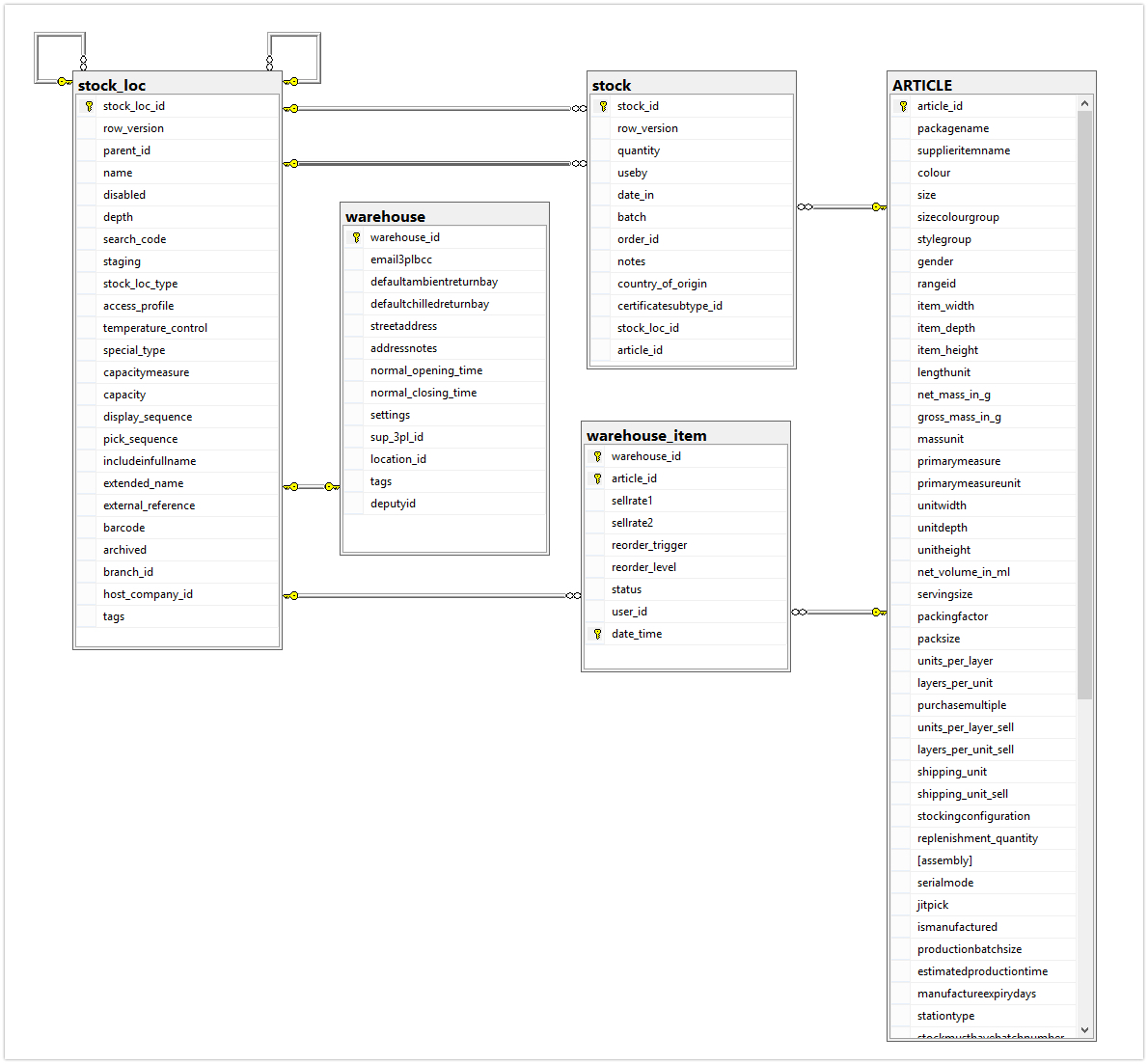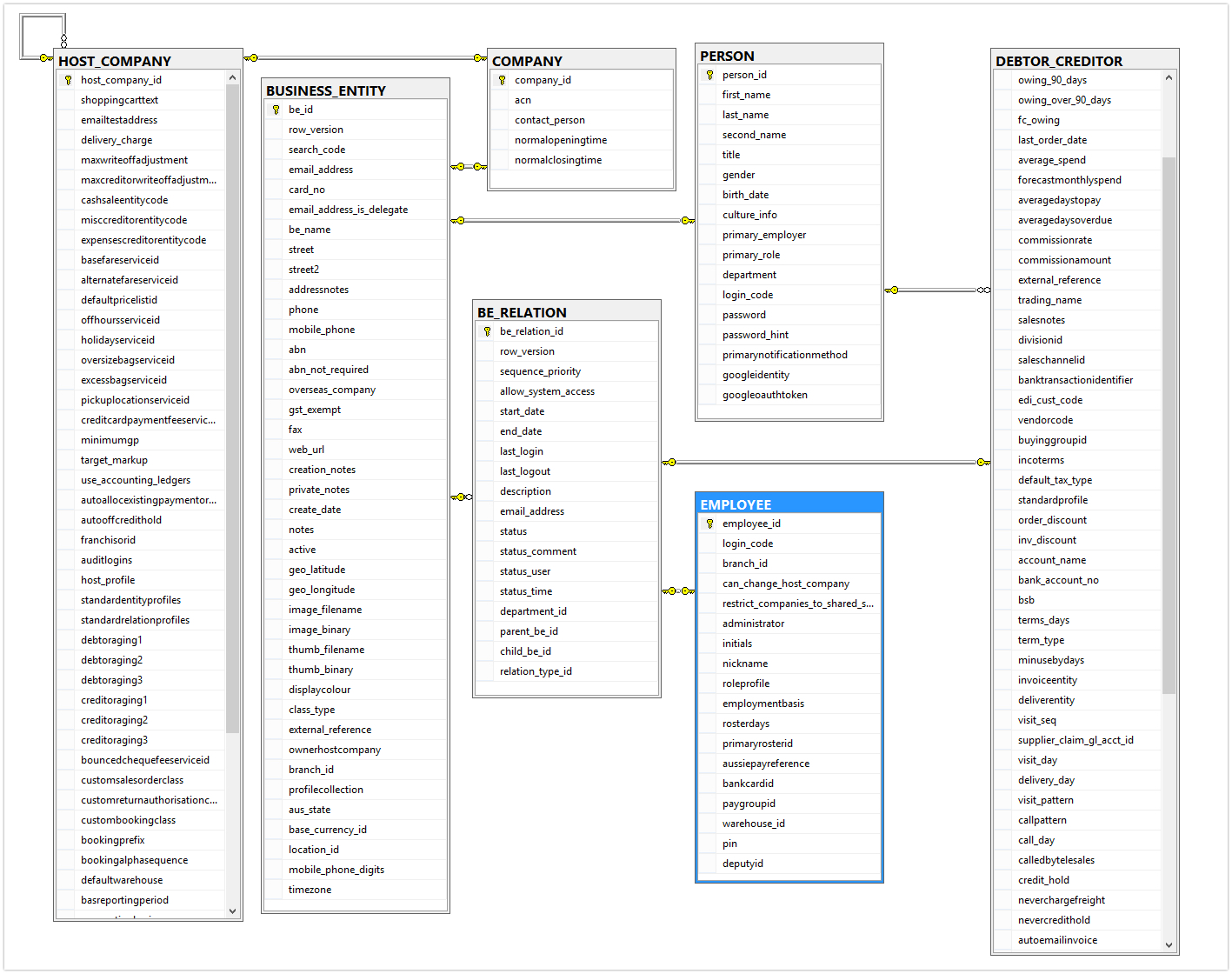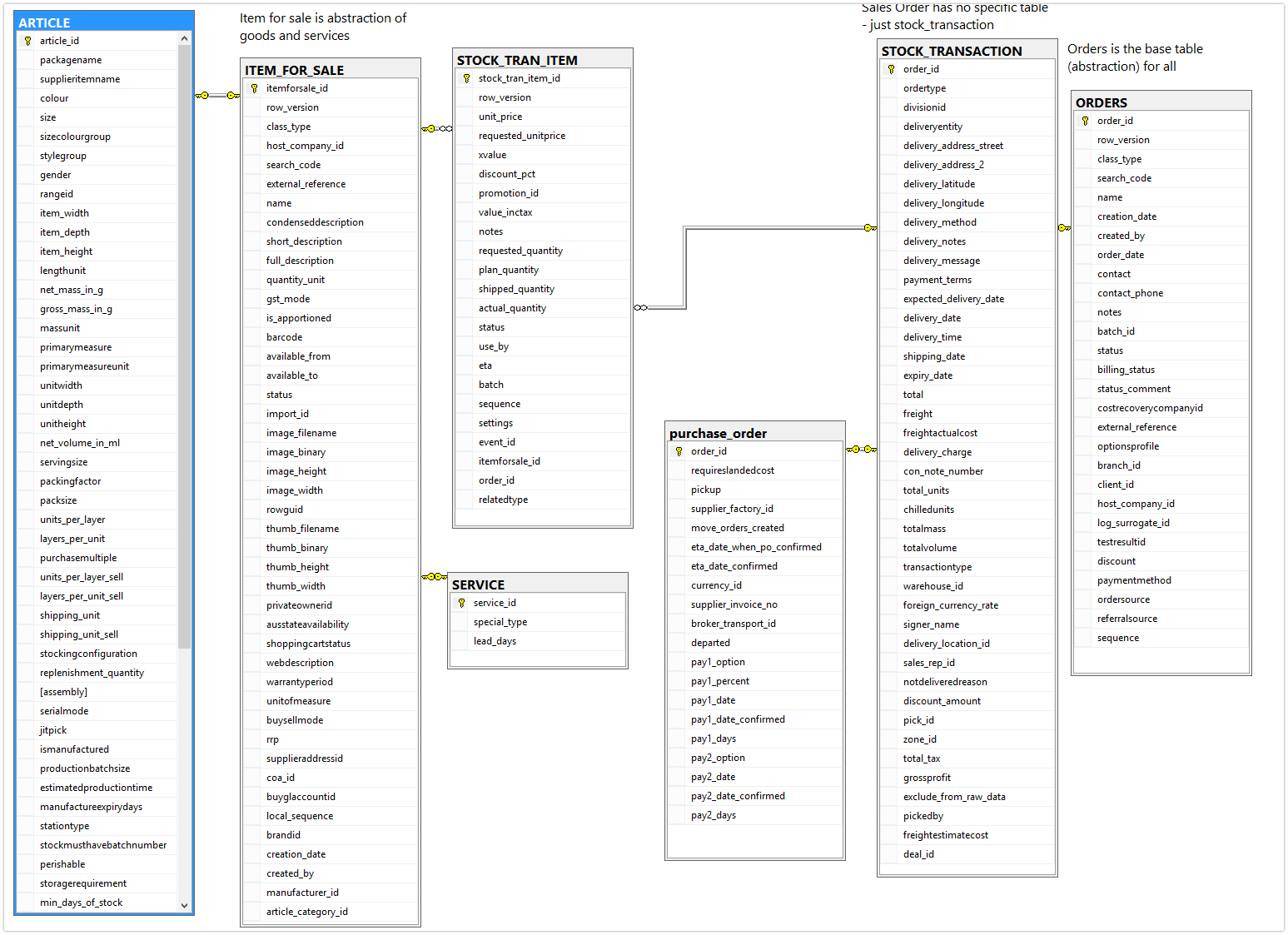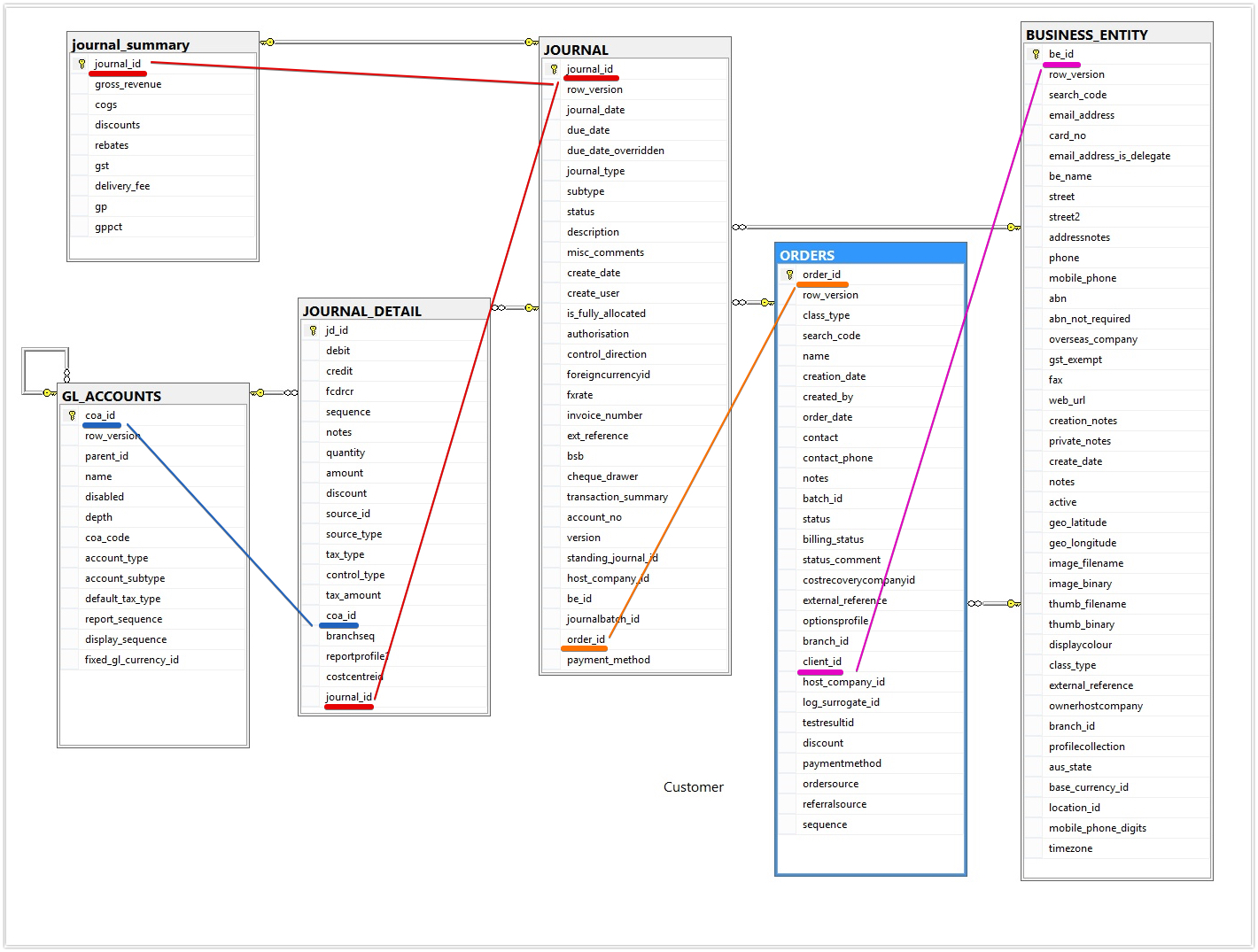Table of Contents
...
Once you have connected PowerBI to the reporting tables - these are the tables to consider.To view the relationships install the standard SQL server management studio and connect to the reporting server.
| Note |
|---|
| title | Direct Access to Diagrams |
|---|
|
There are diagrams in the database to help understand the relationships - use the Microsoft free tool SSMS. https://docs.microsoft.com/en-us/sql/ssms/download-sql-server-management-studio-ssms To view the relationships install the standard SQL server management studio and connect to the reporting server. |
vbi_xxxxx
Tables that begin with vbi_ have been created specifically for reporting. This means that the information in them has been converted to readable form. So if a supplier on a SKU is number 123 in the system - the vbi_ table will show the supplier name (rather than what is stored in the table - the number 123)
...
| Expand |
|---|
| title | Click here to expand...Stock Diagram |
|---|
|
 Image Removed Image Removed Image Added Image Added
|
| Expand |
|---|
| title | Click here to expand... entities and relationships |
|---|
|
 Image Removed Image Removed Image Added Image Added
|
| Expand |
|---|
| title | Click here to expand... core tables |
|---|
|
 Image Removed Image Removed Image Added Image Added
|
| Expand |
|---|
| title | Click here to expand... Orders - sales, purchase, repair, etc |
|---|
|
 Image Removed Image Removed Image Added Image Added
|
| Expand |
|---|
| title | Click here to expand...Journals |
|---|
|
| Gliffy |
|---|
| |
|---|
| name | Journal lines linked to stock transactions |
|---|
| pagePin | 1 |
|---|
|
Journalsvbi_article - this is all stock items and is the Product table- COA_ID - chart of accounts GL account - will only have a value if not using the default values
- MANUFACTURER_ID - link to business_entity to get supplier details
- ITEMFORSALE_ID - link to item_for_sale (1:1 and service also links to item_for_sale)
- SEARCH-CODE = SKU
- ARTICLE_CATEGORY_ID link to table article_category
- STATUS - what is 10 / 20 / 99 ? internal numbers; there should be a StatusText column that is decoded
- brandid - link to table item_brand
- GSTModeText - are values always stored ex GST and this is just whether to add GST or not?
- Price_list (filtered by host company) is Average Cost table
vbi_itemforsale = Abstraction layer for goods (articles) vs servicesvbi_salesordervbi_journal is the table that determines the nature of the transaction from the JournalTypeText field with journal_id being the related key field - JOURNAL_TYPE = Debtor invoice, CN, COGS etc
- JOURNALBATCH_ID = link to journal_batch table
- ORDER_ID = optional related order (Sales, Purchase, RA etc)
vbi_journal_line- Please explain this table relative to vbi_jourmal and vbi_journal_lines
- COA_ID
- debit / credit - only 1 of the 2 be populated per line
- quantity = decorative, used for printing, not part of any calculation
- jd_id = unique id for journal lines
- status - 1,2 or 5 - what do these mean = Status of the line
vbi_journal_lines- Order_ID = optional related order (Sales, Purchase, RA etc)
- control_type
- quantity = decorative, used for printing, not part of any calculation, often the number of items if it was a sale/purchase
vbi_purchaseorder- why a purchase table but no sales equivalent?
- Status - what do the codes mean ?
- supplier_id = different to manufacturer_id - link to business_entity to get supplier details
- ORDER_ID =
- SEARCH_CODE = purchase order search code
- CONTACT = contact name on PO
- log_surrogate_id ?
vbi_purchaseorderlines- LineStatus ? meaning of each number
- XVALUE ?
- PLAN_QUANTITY = quantity on the line sent to the supplier
|
...







